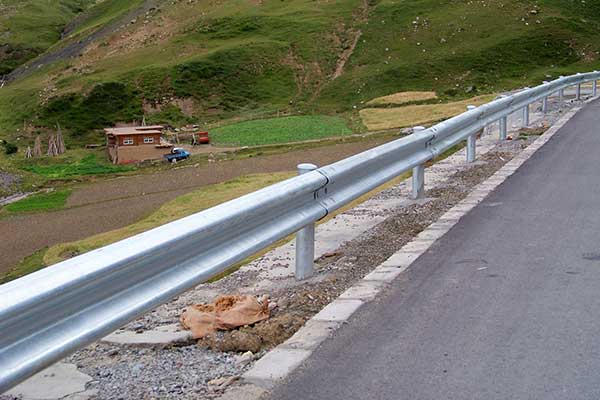Benefits of Highway Guardrail
Highway guardrails are a critical component of modern road infrastructure, designed to protect drivers, passengers, and pedestrians by preventing vehicles from leaving the roadway or entering dangerous zones. Installing guardrails along highways not only improves safety but also contributes to traffic efficiency and long-term cost savings. Here’s a closer look at the key benefits of highway guardrails.

1. Prevent Vehicle Run-Offs
One of the primary functions of highway guardrails is to prevent vehicles from leaving the roadway, especially in dangerous areas such as curves, steep embankments, and bridges. By providing a physical barrier, guardrails can prevent cars and trucks from rolling down slopes or colliding with roadside obstacles, significantly reducing the risk of severe injuries and fatalities.
2. Reduce Crash Severity
Guardrails are engineered to absorb impact energy in the event of a collision. Modern guardrail designs, such as W-beam and cable guardrails, can redirect vehicles along the roadway instead of allowing sudden impacts with hard obstacles like trees, poles, or cliffs. This energy-absorbing property helps reduce the severity of crashes, protecting drivers and passengers.
3. Protect Pedestrians and Cyclists
In areas where highways intersect with pedestrian pathways or bicycle lanes, guardrails act as a protective barrier. They prevent vehicles from veering into non-motorized traffic zones, enhancing the safety of pedestrians, cyclists, and roadside workers. This separation is particularly important in urban areas and highways near residential communities.
4. Improve Traffic Flow
By reducing the likelihood of vehicles leaving the roadway and causing accidents, guardrails contribute to smoother traffic flow. Fewer accidents mean fewer traffic jams and delays, which is beneficial for daily commuters, commercial transportation, and emergency response vehicles. A well-protected highway ensures safer and more efficient travel.
5. Minimize Property Damage
Guardrails also protect roadside infrastructure such as signs, lighting poles, utility installations, and guardrail itself. By preventing vehicles from hitting these structures, highways can reduce repair costs and minimize service disruptions, ultimately saving municipalities and governments money in maintenance and replacement expenses.
6. Enhance Driver Confidence
Knowing that highways are equipped with guardrails can increase driver confidence, especially in adverse weather conditions or on winding roads. Drivers feel safer navigating roads that have protective barriers, which can lead to more controlled and cautious driving behavior, further reducing the risk of accidents.
7. Compliance with Safety Regulations
Highway guardrails are often mandated by national and regional road safety regulations. Installing guardrails ensures compliance with safety standards, helping governments and transportation authorities avoid legal liabilities while promoting a culture of road safety.
Conclusion
Highway guardrails are much more than roadside accessories—they are a critical investment in road safety, traffic efficiency, and property protection. From preventing vehicle run-offs to reducing crash severity and safeguarding pedestrians, the benefits of guardrails are clear. As traffic volumes continue to increase worldwide, proper installation and maintenance of highway guardrails are essential for safer and more reliable roadways.

